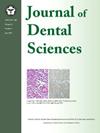COVID-19 vaccination patterns among oral cancer patients: A comprehensive analysis in a medical center in Taiwan
IF 3.4
3区 医学
Q1 DENTISTRY, ORAL SURGERY & MEDICINE
引用次数: 0
Abstract
Background/purpose
COVID-19 vaccines are supplied at no-cost to residents as a measure to prevent comorbidities, fatalities, and the increased risk of community transmission, thus protecting public health systems. However, vaccine acceptance among cancer patients remained uncertain. This study aimed to elucidate the vaccination rates among oral cancer patients at a medical center in Taiwan.
Materials and methods
We included Individuals who attended for routine follow-ups from January 2021 to December 2022, with a total of 1448 patients subjected to comprehensive analysis. Medical records were reviewed to identify factors influencing vaccine acceptance.
Results
Our findings indicate that 1,264 patients received vaccinations, while 184 remained unvaccinated. The vaccination rates among patients in advanced disease stages and those with neck lymph node metastasis (N+) were significantly lower (both P < 0.001). Furthermore, a notable lower vaccination rate was evident among patients receiving active treatment modalities (P < 0.01). Conversely, age, and comorbidities (evaluated using the New Charlson Comorbidity Index), didn't show a significant correlation with vaccination rates. The risk of death caused by oral cancer among vaccinated patients was significantly lower compared to non-vaccinated group (P < 0.001). Logistic regression showed the risk of COVID infection was significant lower in vaccinated group than non-vaccinated group (OR = 0.31, P = 0.034).
Conclusion
The risk of COVID-19 infection in oral cancer patients was lower among vaccinated group, and the vaccination was not associated with more mortality. Identifying the characteristics of non-vaccinated individuals and understanding factors influencing vaccine hesitancy in oral cancer patients is vital for developing targeted strategies to improve vaccine uptake.
口腔癌患者的 COVID-19 疫苗接种模式:台湾一家医疗中心的综合分析
本文章由计算机程序翻译,如有差异,请以英文原文为准。
求助全文
约1分钟内获得全文
求助全文
来源期刊

Journal of Dental Sciences
医学-牙科与口腔外科
CiteScore
5.10
自引率
14.30%
发文量
348
审稿时长
6 days
期刊介绍:
he Journal of Dental Sciences (JDS), published quarterly, is the official and open access publication of the Association for Dental Sciences of the Republic of China (ADS-ROC). The precedent journal of the JDS is the Chinese Dental Journal (CDJ) which had already been covered by MEDLINE in 1988. As the CDJ continued to prove its importance in the region, the ADS-ROC decided to move to the international community by publishing an English journal. Hence, the birth of the JDS in 2006. The JDS is indexed in the SCI Expanded since 2008. It is also indexed in Scopus, and EMCare, ScienceDirect, SIIC Data Bases.
The topics covered by the JDS include all fields of basic and clinical dentistry. Some manuscripts focusing on the study of certain endemic diseases such as dental caries and periodontal diseases in particular regions of any country as well as oral pre-cancers, oral cancers, and oral submucous fibrosis related to betel nut chewing habit are also considered for publication. Besides, the JDS also publishes articles about the efficacy of a new treatment modality on oral verrucous hyperplasia or early oral squamous cell carcinoma.
 求助内容:
求助内容: 应助结果提醒方式:
应助结果提醒方式:


